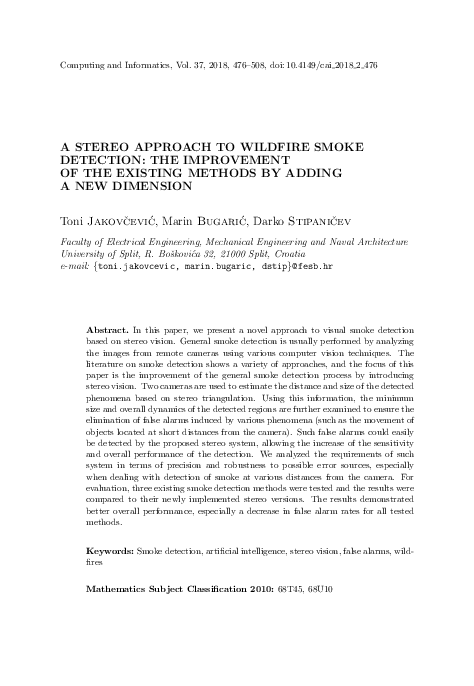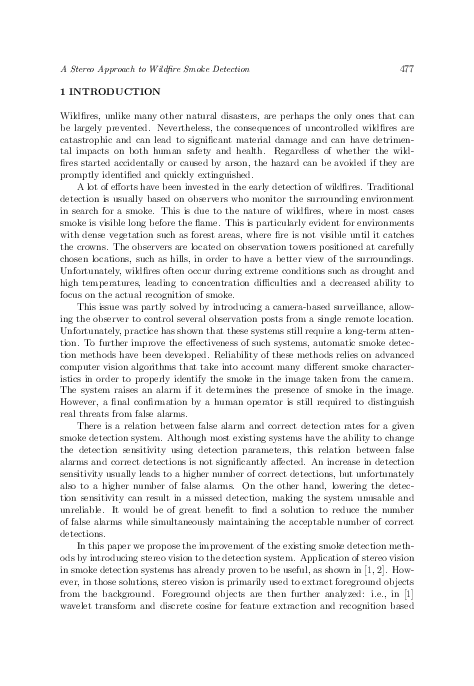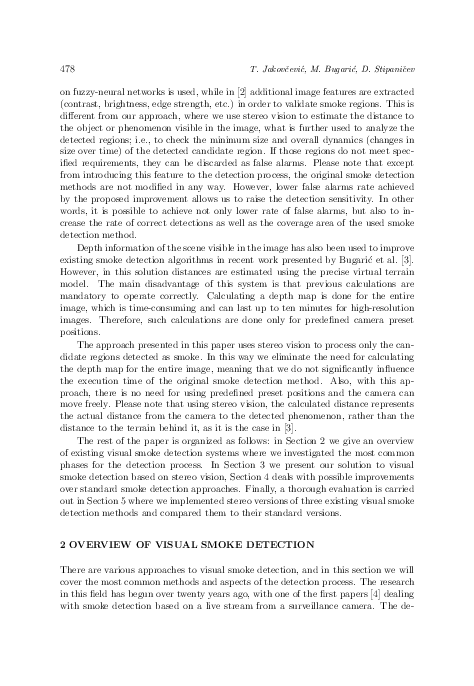A Stereo Approach to Wildfire Smoke Detection: The Improvement of the Existing Methods by Adding a New Dimension
keywords: Smoke detection, artificial intelligence, stereo vision, false alarms, wildfires
In this paper, we present a novel approach to visual smoke detection based on stereo vision. General smoke detection is usually performed by analyzing the images from remote cameras using various computer vision techniques. The literature on smoke detection shows a variety of approaches, and the focus of this paper is the improvement of the general smoke detection process by introducing stereo vision. Two cameras are used to estimate the distance and size of the detected phenomena based on stereo triangulation. Using this information, the minimum size and overall dynamics of the detected regions are further examined to ensure the elimination of false alarms induced by various phenomena (such as the movement of objects located at short distances from the camera). Such false alarms could easily be detected by the proposed stereo system, allowing the increase of the sensitivity and overall performance of the detection. We analyzed the requirements of such system in terms of precision and robustness to possible error sources, especially when dealing with detection of smoke at various distances from the camera. For evaluation, three existing smoke detection methods were tested and the results were compared to their newly implemented stereo versions. The results demonstrated better overall performance, especially a decrease in false alarm rates for all tested methods.
mathematics subject classification 2000: 68T45, 68U10
reference: Vol. 37, 2018, No. 2, pp. 476–508


